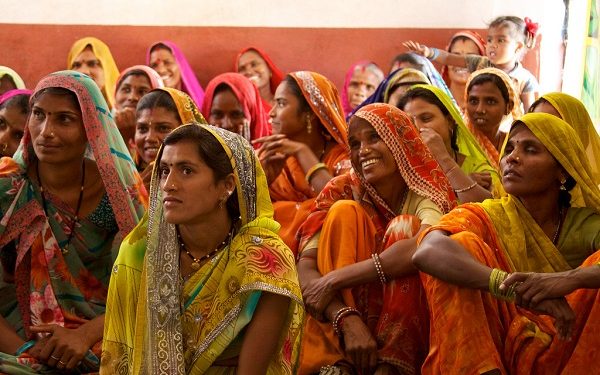On one of my recent visits to Raigad, I interacted with Shiva, a small farmer whose family has been practising agriculture for generations. Walking across his field, he was navigating between three apps. He subscribed to one of the apps through Swades; for monitoring his farm inputs and cultivation data, while the other two Shiva got as free downloads. My curiosity forced me to ask Shiva about the utility of these apps. He shared that he installed these apps a few months ago and they have provided him with good insights and information. But he was quick to add that he has not realized any monetary benefit, though he managed some of his farm operations efficiently. He referred to two key hindrances; limited network in his village and using multiple apps for different challenges he faced, on his farm make it a tedious process for him. Shiva and I hit a cord there. I asked him that if all these services were under one app for which he had to pay some subscription fee, will he be ready to pay for such a platform? Shiva conveniently declined it. I understood his quick mental calculation with apprehensions we all as a customer have. But he is a small farmer, so it is harder for him.
Like Shiva, about 50% of the Indian workforce employed in agriculture (Economic Survey 19 – 20) face the same dilemma of TRUST, ACCESS to quality network, and AFFORDABILITY (Low Perceived Value) when adopting AgTech. But I also see this dilemma as an opportunity for technology solutions. They can plug the loopholes and empower the ecosystem of farming in the country with a “Holistic” approach to AgTech applications. The rise of AgTech companies and the increasing penetration of smartphones, besides the adoption of social media, even among rural youth involved in agriculture, do offer a ray of hope.
The evolving entrepreneurship ecosystem in the country has paved the way for various AgTech players. As per Tracx, AgTech players operating in India have received a cumulative investment funding of US$ 532 million as of April 2020. Offering holistic solutions by AgTech companies can enable the Indian farmer to address the gaps in the cycle of farming. For successful agriculture, technology can support the farmer to increase productivity, ease of operations, and improve the efficiency of other resources like seeds land, and soil. At the same time, it can lead to better connect with markets and consumers and resource optimization (like sharing and renting of machines and other resources).
To drive better outputs and higher incomes for the entire agriculture value chain, AgTech can play an important enabling role in farm operations. However, for this to happen ALL the stakeholders will have to come together, to strengthen the AgTech ecosystem in India.
– AgTechPlatforms: To expand the reach, major players should design affordable service packages that digitize end-to-end processes from land maintenance, sowing, and harvesting for farmers. Information and services within few clicks is a desire that all digital customers have, and farmers are no exception.
– Agri-Corporates: Big chains that buy the farm outputs need to take up a geographical approach and mandate the use of technology by supporting and encouraging small and medium farmers are their major stakeholders.
– Government: The Government initiatives should provide access to new technology to interested farmers. Since most AgTech platforms are cost heavy, government initiatives have scope to complement access to such platforms. All subs of JAM account holders should get access and value of AgTech platforms by default. Additionally, all government front-line workers who are directly connected with millions of farmers should make their services digital too. This will help the farmers to see the value and create better adoption of digital platforms.
– Farmers: Lastly, if the farmer is willing to pay for subscriptions, his ownership and stake in the AgriTechwill increase multifold, forcing all players to make the digital Agri space-efficient and friendlier for him. There is value in applying technology for supplementing farmer efforts in agriculture and farmers will realize the benefits of Agtech. Young farmers like Shiva who are using technology can serve as role models for others in their community.
There is great learning from the current drive of the COVID vaccination in India offers a good example to all AgTech stakeholders. The trust for the vaccine is being built every day; by all stakeholders partnering and amplifying its need and benefits at various levels, across the population. In this vaccination drive, the technology has been an enabler for all the stakeholders making the vaccine drive in India successful.
Similarly, to truly embrace the benefit of new technologies; collaboration, and partnerships amongst all stakeholders can play a grounding factor. Predefined roles for each stakeholder can guarantee success, including both IT and Non-IT players. Secondly, taking up a focussed approach and prioritizing geographies having quality internet connectivity and the presence of organized farm output buyers can advance AgTech in the country. A strong partnership between the government, farmers, and buyer companies can drive this penetration faster and deeper. Lastly, communicating and popularising the benefits of AgTech in this age is the last key to unlock the best potential of AgTech in India.
Views of the author are personal and do not necessarily represent the website’s views.

Mangesh Wange is the CEO at the Swades Foundation. He has been working with Swades Foundation since May, 2016 and has more than 30 years of General Management experience with P&L responsibility and in leading successful start-ups in corporate and social sectors.
Thank you for reading the column. Please drop a line and help us do better.

